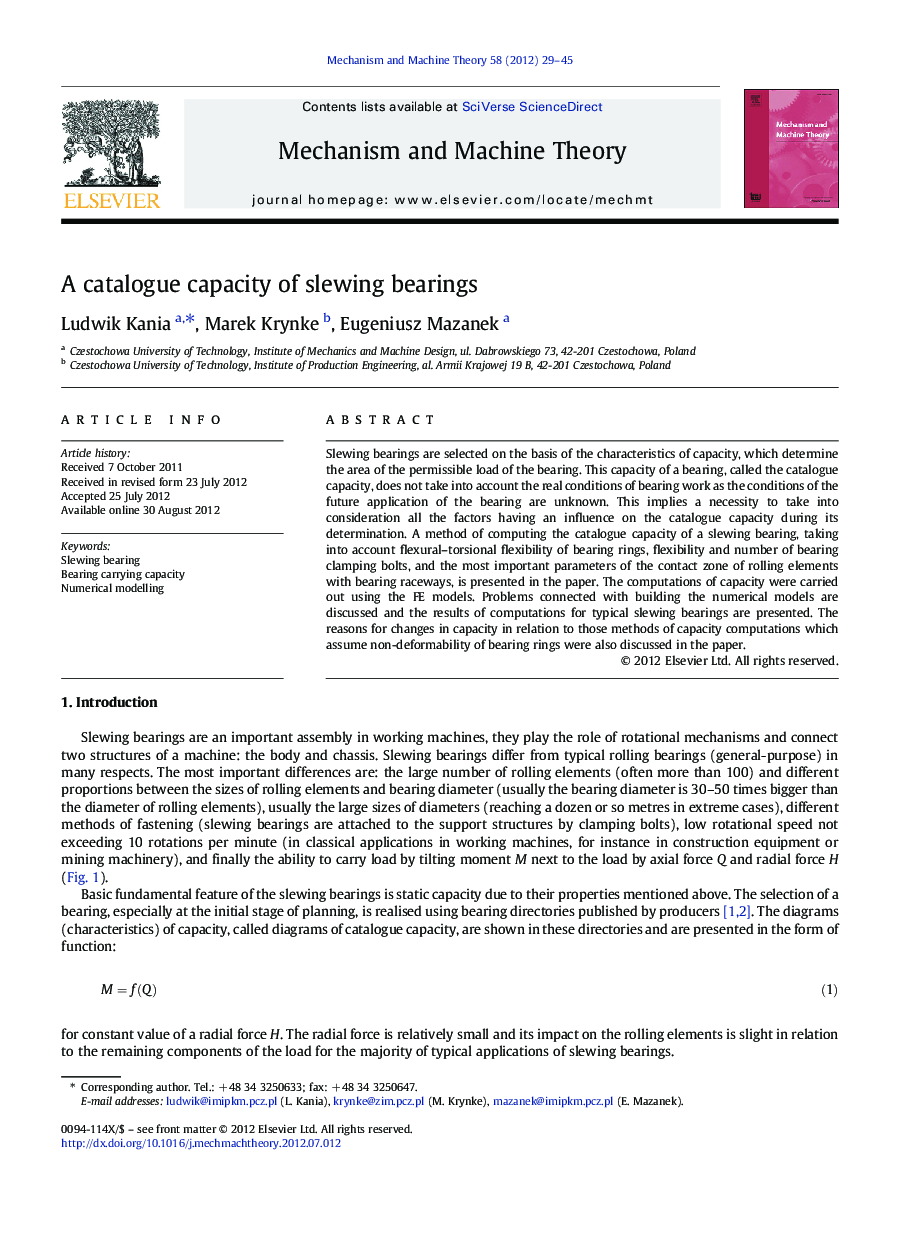| Article ID | Journal | Published Year | Pages | File Type |
|---|---|---|---|---|
| 801918 | Mechanism and Machine Theory | 2012 | 17 Pages |
Slewing bearings are selected on the basis of the characteristics of capacity, which determine the area of the permissible load of the bearing. This capacity of a bearing, called the catalogue capacity, does not take into account the real conditions of bearing work as the conditions of the future application of the bearing are unknown. This implies a necessity to take into consideration all the factors having an influence on the catalogue capacity during its determination. A method of computing the catalogue capacity of a slewing bearing, taking into account flexural–torsional flexibility of bearing rings, flexibility and number of bearing clamping bolts, and the most important parameters of the contact zone of rolling elements with bearing raceways, is presented in the paper. The computations of capacity were carried out using the FE models. Problems connected with building the numerical models are discussed and the results of computations for typical slewing bearings are presented. The reasons for changes in capacity in relation to those methods of capacity computations which assume non-deformability of bearing rings were also discussed in the paper.
► Comprehensive discussion about computation of carrying capacity of slewing bearing ► Consideration of flexibility of bearing rings and clamping bolts in bearing models ► Replacement of the rolling elements by nonlinear superelements ► Analysis of distribution of internal load and contact angles in slewing bearing ► Comparison of computation's results between flexible and rigid bearing models
